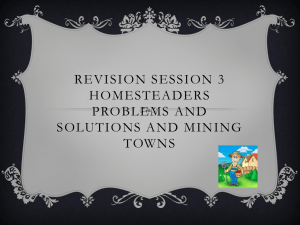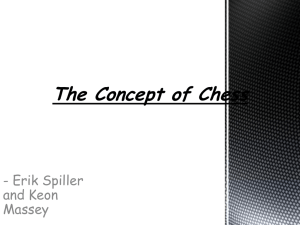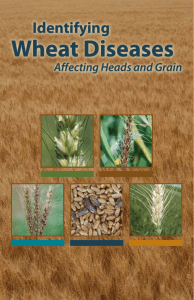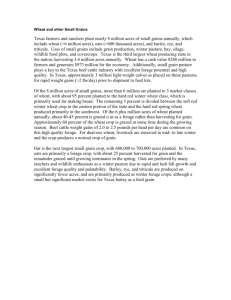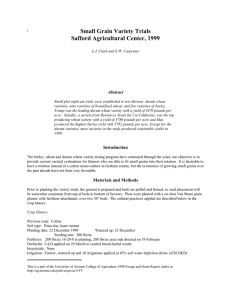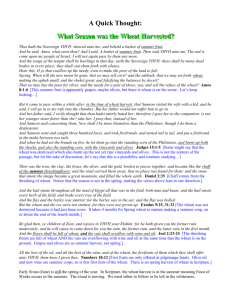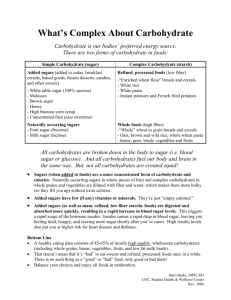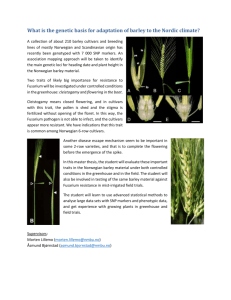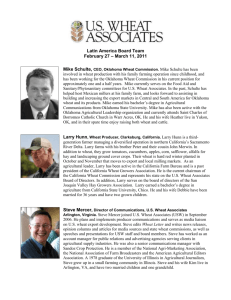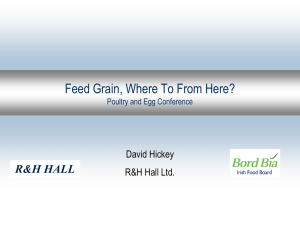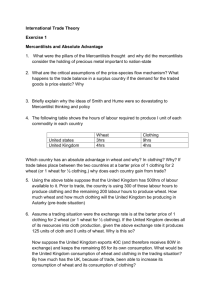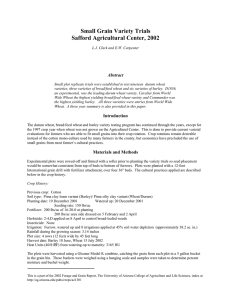Chapter 8: Agricultural Geography Study Guide
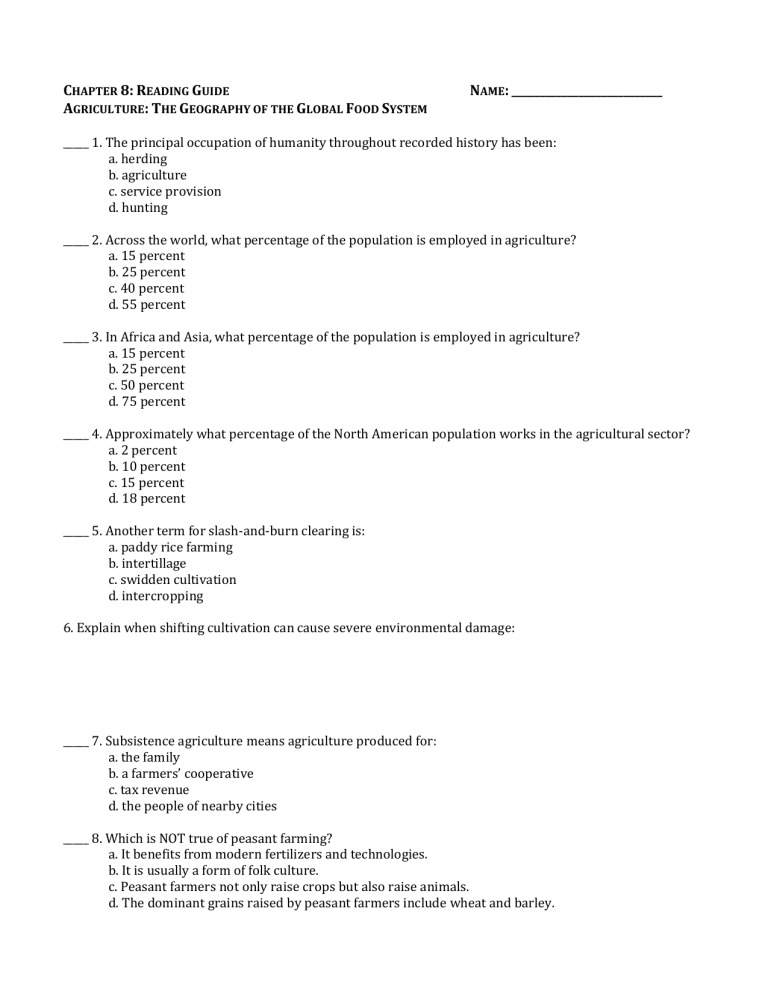
C
HAPTER
8: R
EADING
G
UIDE
A
GRICULTURE
: T
HE
G
EOGRAPHY OF THE
G
LOBAL
F
OOD
S
YSTEM
N
AME
: ___________________________
_____ 1. The principal occupation of humanity throughout recorded history has been: a. herding b. agriculture c. service provision d. hunting
_____ 2. Across the world, what percentage of the population is employed in agriculture? a. 15 percent b. 25 percent c. 40 percent d. 55 percent
_____ 3. In Africa and Asia, what percentage of the population is employed in agriculture? a. 15 percent b. 25 percent c. 50 percent d. 75 percent
_____ 4. Approximately what percentage of the North American population works in the agricultural sector? a. 2 percent b. 10 percent c. 15 percent d. 18 percent
_____ 5. Another term for slash-and-burn clearing is: a. paddy rice farming b. intertillage c. swidden cultivation d. intercropping
6. Explain when shifting cultivation can cause severe environmental damage:
_____ 7. Subsistence agriculture means agriculture produced for: a. the family b. a farmers’ cooperative c. tax revenue d. the people of nearby cities
_____ 8. Which is NOT true of peasant farming? a. It benefits from modern fertilizers and technologies. b. It is usually a form of folk culture. c. Peasant farmers not only raise crops but also raise animals. d. The dominant grains raised by peasant farmers include wheat and barley.
_____ 9. A major grocery chain owns farmland upon which vegetables are grown and trucked daily to the chain’s refrigerated warehouses and stores. This is an example of what type of gardening? a. extensive b. after-market c. subsistence d. market
_____ 10. In which type of agriculture do farmers primarily grow rice, wheat, or corn for commercial markets? a. grain ranching b. swidden agriculture c. grain farming d. market gardening
_____ 11. List three modern improvements that make large-scale grain farming possible
_____ 12. Suppose Mr. Richters spends six months sunbathing in Miami. In May, he flies to his wheat ranch in
Texas to inspect his wheat harvesters. Then he travels through Oklahoma, Kansas, Nebraska, and the
Dakotas supervising the harvesting process at his string of properties stretching northward across the Great Plains. Mr. Richters is categorized best as what type of farmer? a. mariculture b. livestock rancher c. suitcase d. market gardener
_____ 13. The common characteristic of all nomadic herding is: a. swidden agriculture b. mobility c. the reliance on migrant labor d. the need to herd animals from horseback
_____ 14. Urban agriculture: a. produces 90 percent or more of the vegetables consumed in Chinese cities b. refers to the portion of agricultural production intended for processing in cities c. is important as a community empowerment tool, but produces little actual food d. is found almost exclusively in China and Africa
_____ 15. Agriculture began with: a. the rise of cities b. the desire to put children to work c. animal husbandry d. the domestication of plants
_____ 16. The domestication of herd animals, such as cattle, pigs, horses, sheep, and goats, seems to have taken place first in: a. southern Asia b. Southeast Asia’s island archipelagoes c. the Fertile Crescent and the Middle East d. the North European Plain
_____ 17. Which of the following is NOT part of the green revolution? a. chemical fertilizers b. genetically modified crops c. large-scale agribusiness d. organic produce
_____ 18. The regions in von Thünen’s isolated-state model of agricultural distribution and intensity are: a. circular b. triangular c. square d. rectangular
_____ 19. People in Third World countries face starvation primarily as a result of: a. political decisions b. poor soil c. large family size d. overfishing of the coastal waters
_____ 20. In which country did the Great Leap Forward lead to mass starvation? a. Bangladesh b. China c. Ireland d. Indonesia
_____ 21. Which two crops diffusing from the United States account for the rapid growth of genetically modified (GM) food production? a. rice and wheat b. soybeans and corn c. wheat and potatoes d. soybeans and barley
_____ 22. Which type of agriculture reflects an adaptation to poor tropical soils? a. plantation agriculture b. nomadic herding c. urban agriculture d. swidden agriculture
_____ 23. Which central Asian body of water has shrunk drastically as a result of irrigation? a. the Aral Sea b. the Dead Sea c. the Red Sea d. the Salton Sea
_____ 24. What does sustainability mean? (In terms of land use)
_____ 25. The high intensity of land use in Western countries comes from massive investments in: a. migrant labor flows b. protective fencing c. machines, fertilizers, and pesticides d. organic farming techniques
_____ 26. In the United States, which agricultural product is the main source of ethanol? a. wheat b. sugar c. corn d. barley
_____ 27. The creation of large amounts of arid land as a result of overfarming or overgrazing is called: a. intertillage b. desertification c. aridization d. reverse irrigation
_____ 28. Approximately what percentage of the world’s land is cultivated or pastured? a. 10 percent b. 37 percent c. 52 percent d. 71 percent
_____ 29. Irregular field patterns in parts of the eastern United States are a consequence of the meets and bounds surveys. Which one of the items below is the key to such surveys? a. natural features b. cardinal directions c. cultural features d. intermediate directions
_____
30. From 1969 to 1999 world grain production increased by what percent due to the Green Revolution? a. 30 b. 45 c. 72 d. 91




